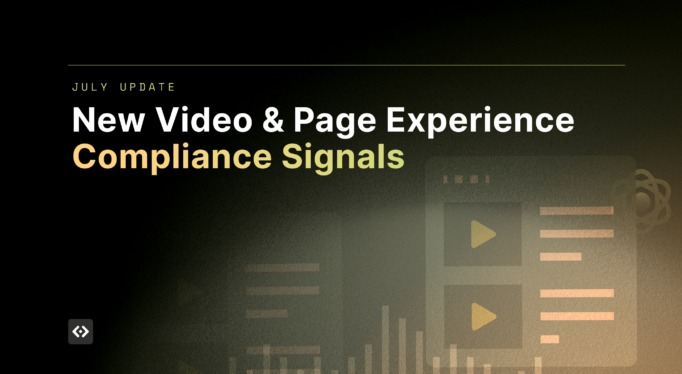Low-quality content not only wastes your time and money but also significantly impacts the efficiency of your advertising budget. Our recent collaboration with leading trade groups, including the ANA, 4A’s, WFA, and ISBA, has brought new insights into the pervasive issue of Made-for-Advertising (MFA) sites. According to findings by the ANA, these sites account for 21% of impressions and 15% of ad spend, highlighting the crucial need for advertisers to refine their digital strategies to avoid these pitfalls.
In this updated guide, you’ll gain insights into:
- The defining characteristics of Made-for-Advertising websites
- Strategies to detect and avoid low-quality websites
- Understanding brand suitability in the context of MFA sites
- Creating effective inclusion and exclusion lists to optimize ad spend
- Practical steps to reduce digital advertising waste
Understanding Made-For-Advertising Sites
Made-for-Advertising websites, as defined through our collaborative efforts with industry leaders, are primarily engineered for the arbitrage process of buying and selling ad inventory. (As experts in MFA, deepsee.io consulted with trade groups including the ANA, the 4A’s, WFA and ISBA to define it). These sites often feature sensational headlines, clickbait, and provocative content to drive page views and, consequently, ad revenue. Despite exhibiting high measurability rates, good viewability rates, and low levels of invalid traffic in seemingly brand-safe environments, the underlying content quality and user experience are low, characterized by:
- High ad-to-content ratios, often twice the internet average
- Rapidly auto-refreshing ad placements and intrusive ad formats
- A significant reliance on paid traffic, with little to no organic audience
- Generic, non-editorial content that is often syndicated and dated
MFA websites frequently evade detection by displaying different content based on the user’s origin. For example with direct traffic, a user may have a normal ad-viewing experience. However, if the site detects that the user is coming via a paid traffic source, it will be much more aggressive in the amount of ads it displays. This type of dynamic behavior helps MFA sites to avoid scrutiny from advertising partners, allowing them to easily navigate compliance checks from supply site partners. Avoiding these websites is tricky since many of them have found ways to circumvent SSPs (Supply Side Platforms) that check for low-quality pages; so, often they go undetected, wasting millions of dollars in the process. (Check out our study on traffic arbitrage and made-for-advertising websites).
These pages often host low-quality or stolen content to appear more legitimate. Combine that with a website that is overloaded with advertisements jockeying for position in front of the user, and you end up with a chaotic and unpleasant viewing experience for anyone visiting the page.
Placement on these sites is often relatively inexpensive, making it an attractive option for advertisers looking to get the greatest number of impressions out of their budget. These pages boast high view counts and completion rates due to non-stop ads but, unfortunately, the organic traffic to these websites is usually minuscule and inconsequential.
According to a recent study by the ANA find that MFA consumes 15% of advertising spend and produces 21% of impressions (Source).
A Collaborative Definition
We, including our co-founder and CEO, Rocky Moss, in consultation with the ANA and other leading trade groups, have played a pivotal role in defining the criteria that categorize a website as Made-for-Advertising. This collaboration has highlighted the importance of understanding the operational mechanics of MFA sites, including their reliance on aggressive monetization practices and the challenges they pose in maintaining brand suitability standards.
Brand Suitability Risks with MFA Websites
Brand suitability is centered on identifying a brand’s needs and increasing value through online content placement. Displaying high-quality ads alongside relevant content is the goal, but brand suitability is about finding the advertising space that fits your brand across multiple channels.
Made-for-advertising websites threaten brand suitability by placing your ads in an environment that discourages organic traffic. In a 2019 study, ads that were viewed in “high-quality mobile web environments” were seen “74% more favorably than the same advertisements seen in low-quality context.” By keeping programmatic ads on MFA sites, you reduce the quality of your brand suitability by not directly optimizing ad placement. It’s almost like throwing money away.
Optimizing Your Ad Spend
To navigate the complex landscape of digital advertising and safeguard your investments, it’s crucial to:
- Develop a clear understanding of your brand’s advertising needs and suitability criteria
- Utilize our tools and platforms, like the Publisher Risk Portal, to audit and refine your programmatic ad placements
- Create and maintain dynamic inclusion and exclusion lists to ensure your advertising efforts align with high-quality, relevant content environments
We remain at the forefront of addressing the challenges posed by Made-for-Advertising sites, offering our subscribers comprehensive tools and insights to enhance the quality of their programmatic spending. By leveraging our expertise and the collaborative efforts with industry trade groups, advertisers can take decisive steps to minimize waste and optimize their digital advertising strategies.
Our platform gives advertisers the ability to audit websites where their ads are displayed, as shown in their campaign delivery reports, to identify possible risks and avoid any pages that might host exploitative behavior. Our MFA and other exclusion lists are available for licensing and quick integration into any platform.
Want to learn more? Get a free media audit from us and see the impact on your KPIs first hand.








